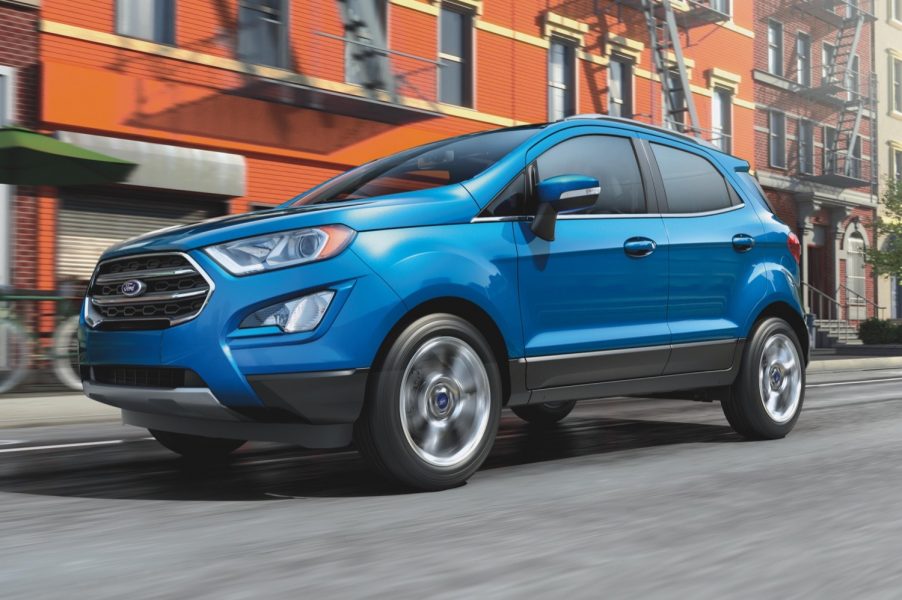
Ford exit: Why has another US carmaker run out of gas in India?

Ford’s formal announcement on Thursday that it was pulling out of India has left its customers and dealers in a state of shock. For the carmaker itself, the realisation that it could no longer continue with its operations had dawned upon it early this year when its proposed partnership with Mahindra & Mahindra fell through.
The American carmaker had placed all its bets on the partnership taking off as plans for the new models had already been frozen. It consisted of seven new models including three 4X4s, all of which would be rolled out during the next three years.
But a change in leadership at M & M following the exit of Dr Pawan Goenka changed the fortunes of Ford completely as the new management team decided not to go ahead with the partnership.
But why was an American carmaker leaning on an Indian company to bail itself out? When Ford started its operations over 25 years ago, it came up with models that became instant hits, like the Ikon and Escort. When Ford launched its Indian operations in 1996 it was with Mahindra & Mahindra. The first car was a European model called Escort followed by the subcompact sedan Ikon. Both were runaway hits. However, the JV with M & M was called off midway and Ford began its own operations here. Ford launched more cars during the course of its operations, which included Figo, a compact hatchback. That too garnered good sales but after that, Ford lost its way. It had wasted three years for the partnership with M & M to bear fruit, which could have as well been utilised to launch newer models. During that time, companies like Kia and MG Motors launched their own operations and are now leaders in their respective segments.
Also read: Centre’s hallmarking rules unilateral, may bleed small jewellers dry
For several months now, reports about Ford trying to find a buyer for its two plants, one in Chennai and another near Pune, were doing the rounds. This was perhaps the first indication of its intending move to close down its operations.
On Thursday, Ford’s India head Anurag Mehrotra came out with a statement saying that despite the carmaker’s best efforts, it has been unable to find a sustainable path forward to long-term profitability. Ford said it had incurred losses of $2 billion in India during the last 10 years and was still unable to find a good market for its cars. In May this year, it made a similar announcement stating that it was stopping productions in Brazil after taking a $12 billion hit.
With Ford exiting India, the presence of the American car manufacturers in the country has more or less ended as General Motors had closed shop earlier. Even after being in the country for over two-and-half decades, Ford’s market share is a mere 2 per cent. Another carmaker that is currently in the same state is Toyota. The Japanese carmaker was expected to, as per its own projections, have a share of around 10 per cent by 2010 but finds itself languishing at around 3 per cent even after being around since 1998.
Some of the problems that Ford faced in Brazil are similar to those it faces in India. High taxes, an unfriendly regime and a highly unionised labour force. Other carmakers have barely managed to stay afloat, as can be seen from muted sales in the country. Sales of passenger cars in India, as per earlier projections, was expected to be around 5 million by 2020. However, it remains at about 3 million.
A fortnight ago, two big Indian industrialists at a public forum, which also saw the participation of some of the bureaucrats, pulled no punches while criticising the government.
R C Bhargava, chairman of India’s largest carmaker, Maruti Suzuki, and Venu Srinivasan, chairman of TVS Motor, calling for a reduction in taxes, questioned the government’s intent to support the auto sector.
Also read: Centre’s ‘burial’ of retro tax a last-ditch attempt to lift sagging economy
While Revenue Secretary Tarun Bajaj sat listening to the diatribe unleashed by some of the foremost industrialists in the country, the reaction from the government was on expected lines. Instead of trying to address the issue raised by the automakers, Bajaj is learnt to have countered the argument by asking them the reason for the increase in demand for SUVs even though it attracts additional cess. It left everyone wondering what exactly the bureaucrat was trying to point out as over 50 per cent of the cars in India consist of small passenger vehicles. Srinivasan in his speech referred to how even the price of the moped has gone up by 45-50 per cent during the last few years. The switch to BS6, cost of ABS, Supreme Court ruling on mandatory purchase of three-year insurance and a one-time tax have increased the prices of mopeds.
Also read: As US, Europe open up, new IT challenges emerge for domestic firms
It goes to show that if car manufacturers don’t have their own backup plans and a robust portfolio of models in India, they are bound to fail, as seen by the examples of Ford and General Motors. The government, meanwhile, is on altogether another platform trying to push all manufacturers to launch electric vehicles as soon as possible.
This is expected to deepen the crisis for the car manufacturers as the Indian government seems to be unrelenting in its position even though an alternative like hybrid cars may perhaps be the best solution in the current scenario.

